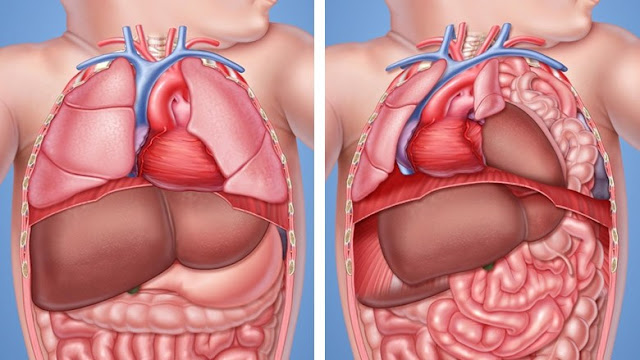Diaphragmatic Hernia – Is It Always Congenital?
Overview
A
diaphragmatic hernia occurs when any one or more of abdominal organs move
upwards into the chest through an opening in the diaphragm. This opening is
actually a defect which is either since birth (congenital) or develops in the
course of life (acquired). Thus, diaphragmatic hernia has two types, namely;
Congenital Diaphragmatic Hernia (CDH) and Acquired Diaphragmatic Hernia (ADH).
The differences between the two will be highlighted below.
Differences in the Types
CDH
occurs due to the abnormal development of a foetus in the womb. This abnormal
development results in a defect which allows one or more organs to move up and
occupy some space in the chest, where lungs should be. This usually affects one
lung which doesn’t develop properly.
ADH
usually results from an injury, either a blunt one or a penetrating one.
Accidents and falls are usually to blame for these, and an error made during
abdominal or chest surgery can also cause ADH.
Treatment
Both
CDH and ADH typically require urgent surgery. Diaphragmatic hernia treatment comes under the branch
of medicine known as gastroenterology,
and the surgery will be performed by gastro-surgeon. During the surgery, the
abdominal organs are removed from the chest and placed back in the abdomen. The
diaphragm is then repaired. With CDH, the surgery has to be done 48 to 72 hours
after birth of the child. With ADH, surgery should happen as soon as possible
after diagnosis.
There are
multi-specialty hospitals in Gurgaon
and Delhi NCR for all sorts of gastric
problem treatment, where you can find the best gastroenterologist in Gurgaon and Delhi NCR.
You may also like to read:





Comments
Post a Comment